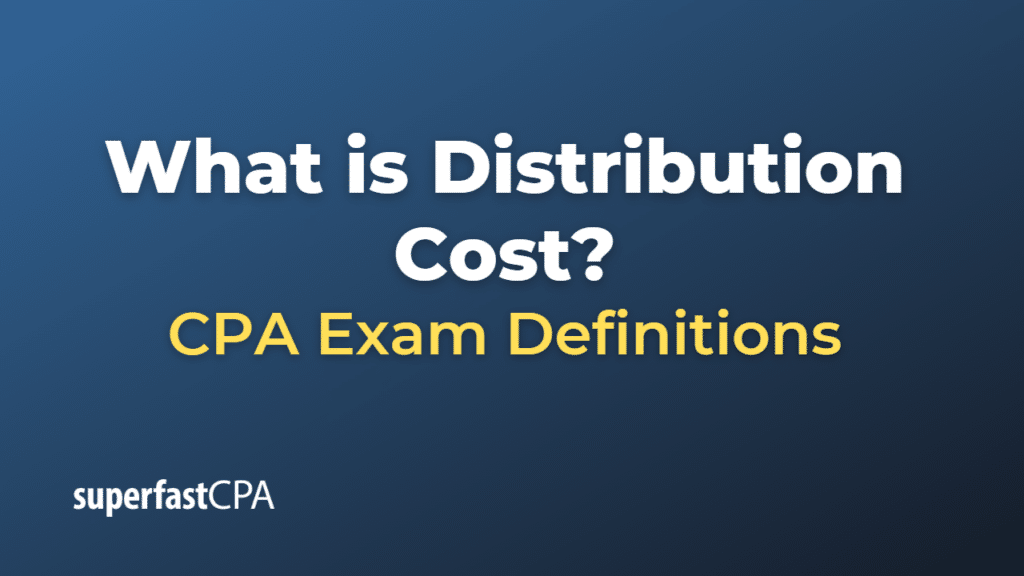Distribution Cost
Distribution cost, also known as distribution expense, is the cost incurred by a business to store, transport, and deliver its products or services to customers. These costs are a part of the overall operating expenses of the business, and they can significantly impact the profit margin and the price of the products or services.
Distribution costs may include the following:
- Transportation Costs: These are the costs of shipping products from the place of production to the place of sale. They may include freight and fuel charges, insurance, customs and duties (for international shipping), and costs related to air, rail, or sea transport.
- Warehousing and Storage Costs: These are the costs of storing products before they’re sold. They may include rent or depreciation of warehouse space, utilities, security, and costs related to inventory management.
- Order Processing Costs: These are the costs associated with receiving and processing customer orders. They may include labor costs, costs of packaging materials, and costs related to order-entry systems.
- Inventory Costs: These costs are associated with holding inventory, including the cost of capital tied up in inventory, as well as potential costs related to spoilage, obsolescence, or shrinkage.
- Sales and Marketing Costs: These include costs associated with promoting and selling the products, such as advertising costs, sales commissions, and costs of producing marketing materials.
These costs can vary widely based on the nature of the business, the type of products or services sold, and the chosen distribution channels. Effective management of distribution costs is important for a business to remain competitive and profitable.
Example of Distribution Cost
Suppose “Cool Drinks Inc.” is a beverage manufacturer that sells its products across various states. Here are some of the distribution costs they might incur:
- Transportation Costs: Cool Drinks Inc. needs to ship their beverages from their manufacturing facility to various retail stores across the country. If they spend $5,000 per month on freight charges, this would be part of their distribution costs.
- Warehousing and Storage Costs: Cool Drinks Inc. might store their beverages in a warehouse before they’re shipped to retailers. If they pay $3,000 per month for warehouse rent and utilities, this would also be part of their distribution costs.
- Order Processing Costs: When a retailer places an order, Cool Drinks Inc. has to process the order, package the goods, and prepare them for shipment. If they spend $1,000 per month on labor, packaging materials, and related expenses for these tasks, this would be included in their distribution costs.
- Inventory Costs: Holding a large inventory of beverages may also incur costs, such as potential spoilage or the cost of capital tied up in inventory. Let’s say these costs amount to $1,500 per month.
- Sales and Marketing Costs: Finally, Cool Drinks Inc. spends money on promoting their beverages to retailers and customers. If they spend $2,000 per month on advertising, marketing materials, and sales commissions, these costs would also be part of their distribution costs.
So, the total distribution cost for Cool Drinks Inc. in this scenario would be $12,500 per month ($5,000 + $3,000 + $1,000 + $1,500 + $2,000).
By tracking these costs, Cool Drinks Inc. can better understand how much they’re spending to get their products to market, which can inform pricing decisions and efforts to improve efficiency.













